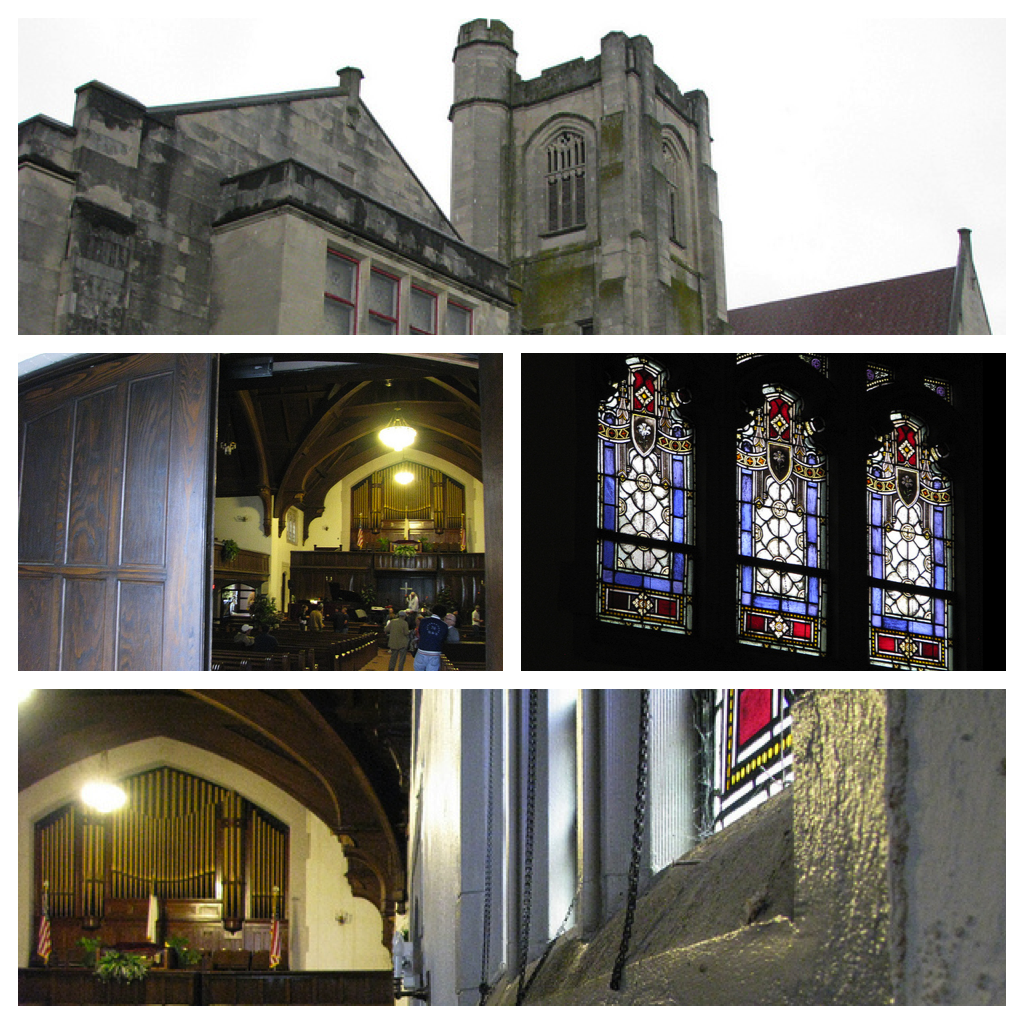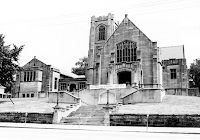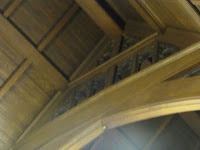 |
| The First Baptist Church – Lexington, Ky. |
Across Main Street from Rupp Arena, fifty stone steps climb over five landings to reach the sanctuary entrance of the circa 1913 First Baptist Church. The impressive structure is a Lexington landmark in part because of its prominent Main Street location and in part because of its architectural grandeur. The massive clock tower and red tile roof mark this iconic location.
Three former Baptist churches occupied the site, as did Lexington’s earliest burying ground. In fact, it was here that King Solomon buried the dead from the 1833 cholera epidemic. A decade and a half later, most of the bodies were relocated to the newly organized Lexington Cemetery.
Two of the old Baptist churches burned on the site, while the third was simply outgrown. When the extant structure was erected at a cost of approximately $125,000, it was built of Bedford limestone (Indiana) in the Collegiate Gothic style. Though the style is not often displayed in Lexington, it is commonly seen at the Ivy Leagues schools and at universities across the country.
 |
| First Baptist Church; ca. 1975 (Source: NRHP) |
It is an impressive architectural style, made ecclesiastical at First Baptist through the repeated use of the quatrefoil, cross and other religious symbols in the exterior’s decorative stonework.
Entrance to the sanctuary is through a deeply recessed bay which had been closed in recent years because of structural concerns. Work on maintaining First Baptist has been a struggle as what was once one of the South’s largest Baptist congregations has drastically dwindled in number. With limited attendance comes limited tithe and offering, and the church building suffers.
All is not lost, however, as a handful of congregations now pool resources to call the First Baptist Church home. Each attempts to do its part in maintaining this magnificent piece of history.
Originally meeting in the homes of members as the Town Fork (or Town Branch) Baptist Church, it associated with the Elkhorn Association on August 15, 1786. Lewis Craig (brother to Elijah Craig) was involved in the establishment of Town Branch giving to First Baptist a hand on the legacy of the Traveling Church.
Rev. John Gano was called in 1789 to the newly erected meetinghouse on the site. He had been a chaplain in the Continental Army having served throughout the long winter at Valley Forge.
A division arose in the church in 1826 when the influence of Alexander Campbell and the Restoration Movement brought Dr. James Fishback to introduce a resolution to change the church from Baptist to “Church of Christ.” The resolution was lost, so Fishback and his supporters departed First Baptist to organize the “Church of Christ on Mill Street” of which Central Christian Church is the eventual, albeit indirect descendent.
Inside, the first time visitor is overcome by the enormity of the cruciform shaped sanctuary. Anchored at front by pulpit and a choir balcony that also features an impressive pipe organ, the 1500-seat sanctuary features three additional balconies so that there is one on each wall. The pews and brass cluster chandeliers, all original.
It is, however, the “wide-grained chestnut timberwork over-arching the auditorium” that takes one’s breath away. Corbels at the base of each three-foot thick rib feature “intricately carved angels” while “horizontal bands of acanthus, leaves and acorns” adorn panelling above the pulpit.
And in case one is not sufficiently taken aback, five large stain-glass windows adorn. The space is one most Holy, Holy, Holy.
I visited First Baptist during a concert by the Lexington Area Music Alliance, LAMA. The concert was profiled yesterday and is available by clicking here.
Additional photographs of First Baptist Church and the LAMA concert are available on flickr.
Sources: Baptist History Homepage; Mickey Anders; NRHP (Historic Western Suburb); Historic Western Suburb NA; Tom Eblen

